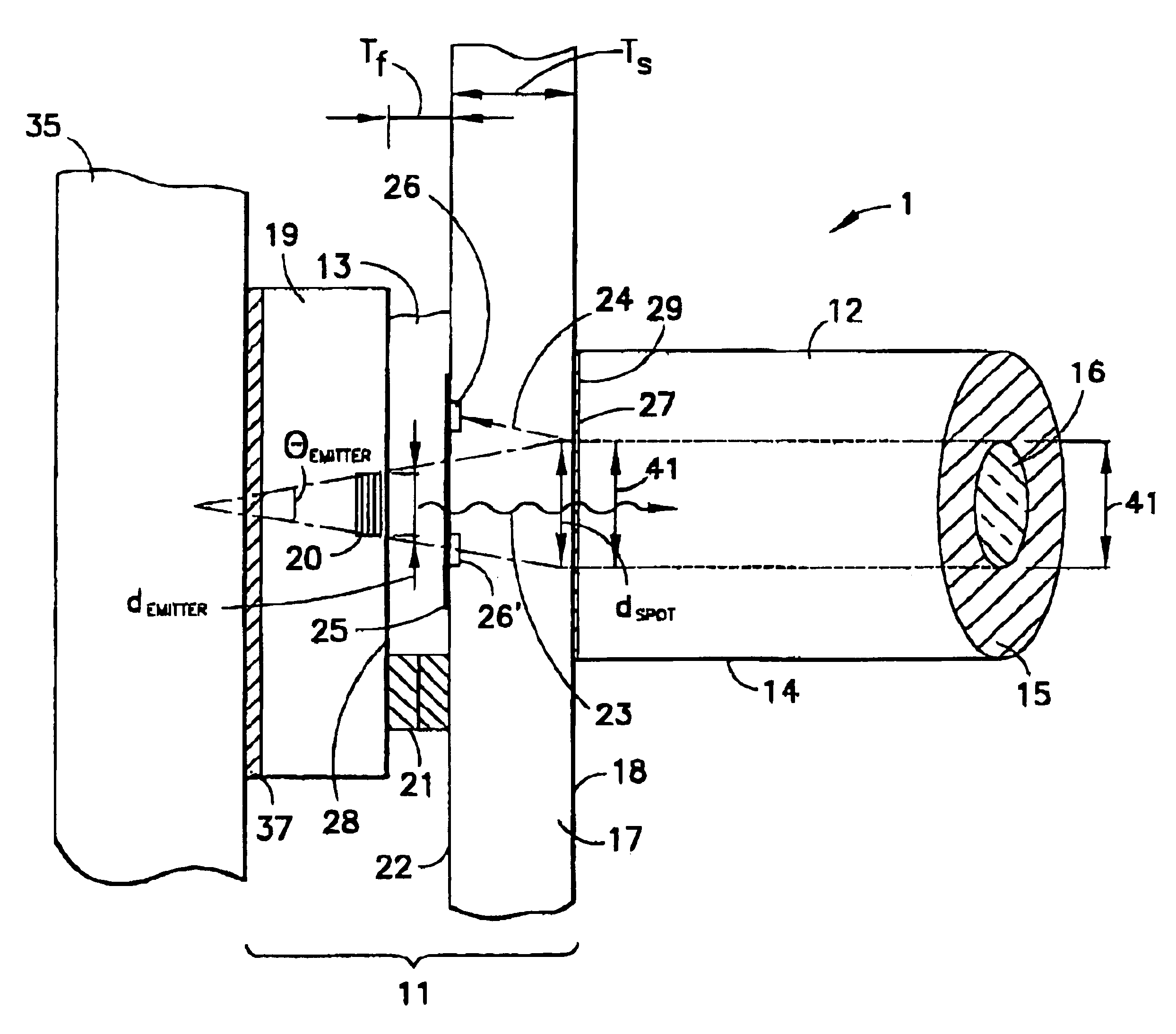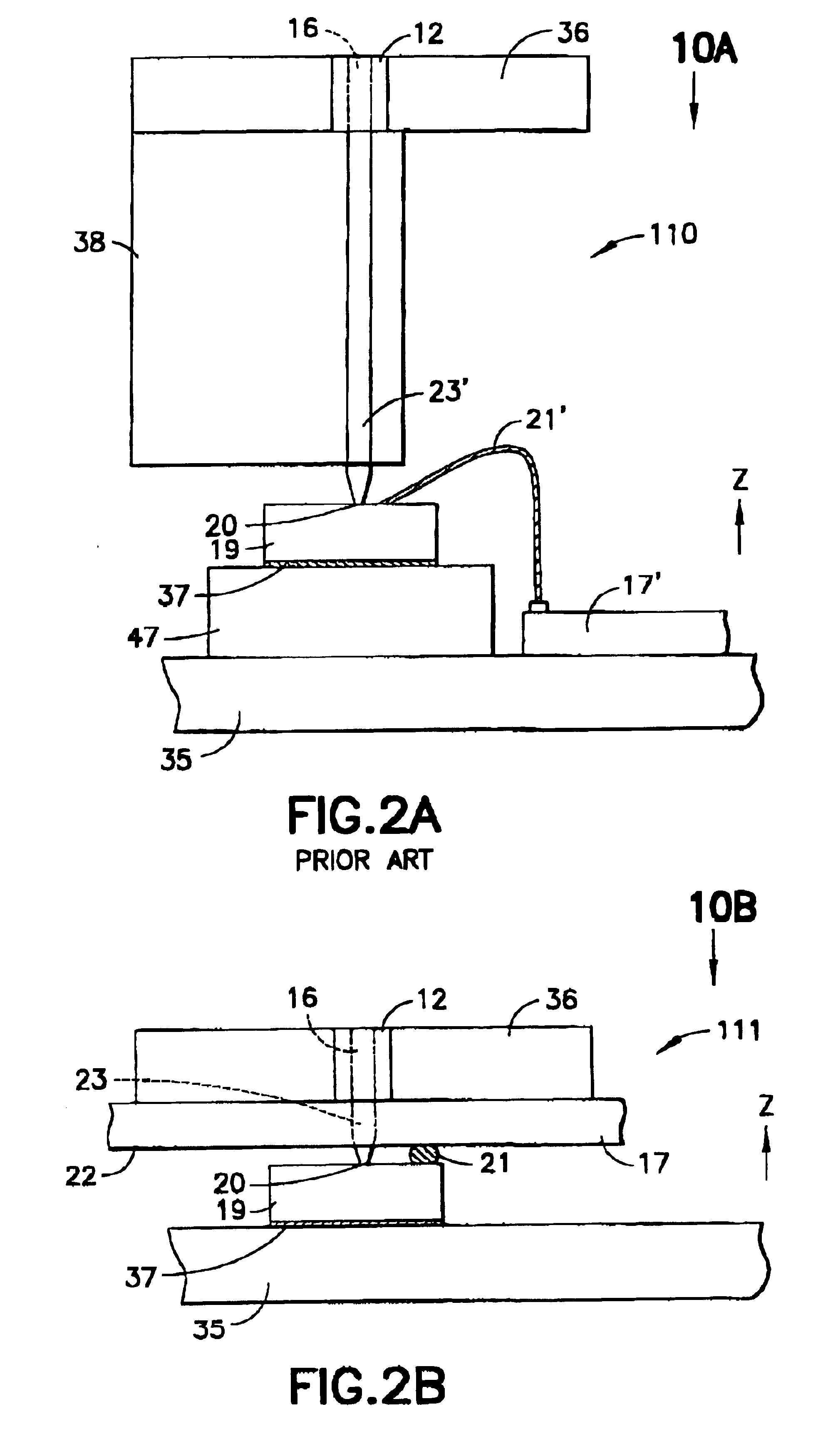Small-scale optoelectronic package
a small-scale optoelectronic and package technology, applied in the direction of instruments, optical elements, semiconductor/solid-state device details, etc., can solve the problems of difficult to efficiently configure the light path between the optical fiber and the optoelectronic device, space constraints, and the like, to achieve the effect of being easily manufacturable and not sacrificing speed and power performan
- Summary
- Abstract
- Description
- Claims
- Application Information
AI Technical Summary
Benefits of technology
Problems solved by technology
Method used
Image
Examples
Embodiment Construction
Definitions
[0113]As used herein, the following terms are defined as follows:
[0114]The “transparent insulating substrates” useful in the practice of the invention include those transparent, electrically insulating substrates on which may be formed silicon layers suitable for electronic circuitry as well as transparent, electrically insulating substrates such as glass that are well-suited to bonding to integrated circuit chips.
[0115]Integration of silicon and optoelectronic devices on a common insulating transparent substrate requires that an effective method for forming silicon CMOS devices on the transparent, insulating substrate be used. Examples of and methods for making such silicon-on-sapphire devices are described in U.S. Pat. No. 5,416,043 (“Minimum charge FET fabricated on an ultrathin silicon on sapphire wafer”); U.S. Pat. No. 5,492,857 (“High-frequency wireless communication system on a single ultrathin silicon on sapphire chip”); U.S. Pat. No. 5,572,040 (“High-frequency wi...
PUM
 Login to View More
Login to View More Abstract
Description
Claims
Application Information
 Login to View More
Login to View More - R&D
- Intellectual Property
- Life Sciences
- Materials
- Tech Scout
- Unparalleled Data Quality
- Higher Quality Content
- 60% Fewer Hallucinations
Browse by: Latest US Patents, China's latest patents, Technical Efficacy Thesaurus, Application Domain, Technology Topic, Popular Technical Reports.
© 2025 PatSnap. All rights reserved.Legal|Privacy policy|Modern Slavery Act Transparency Statement|Sitemap|About US| Contact US: help@patsnap.com



